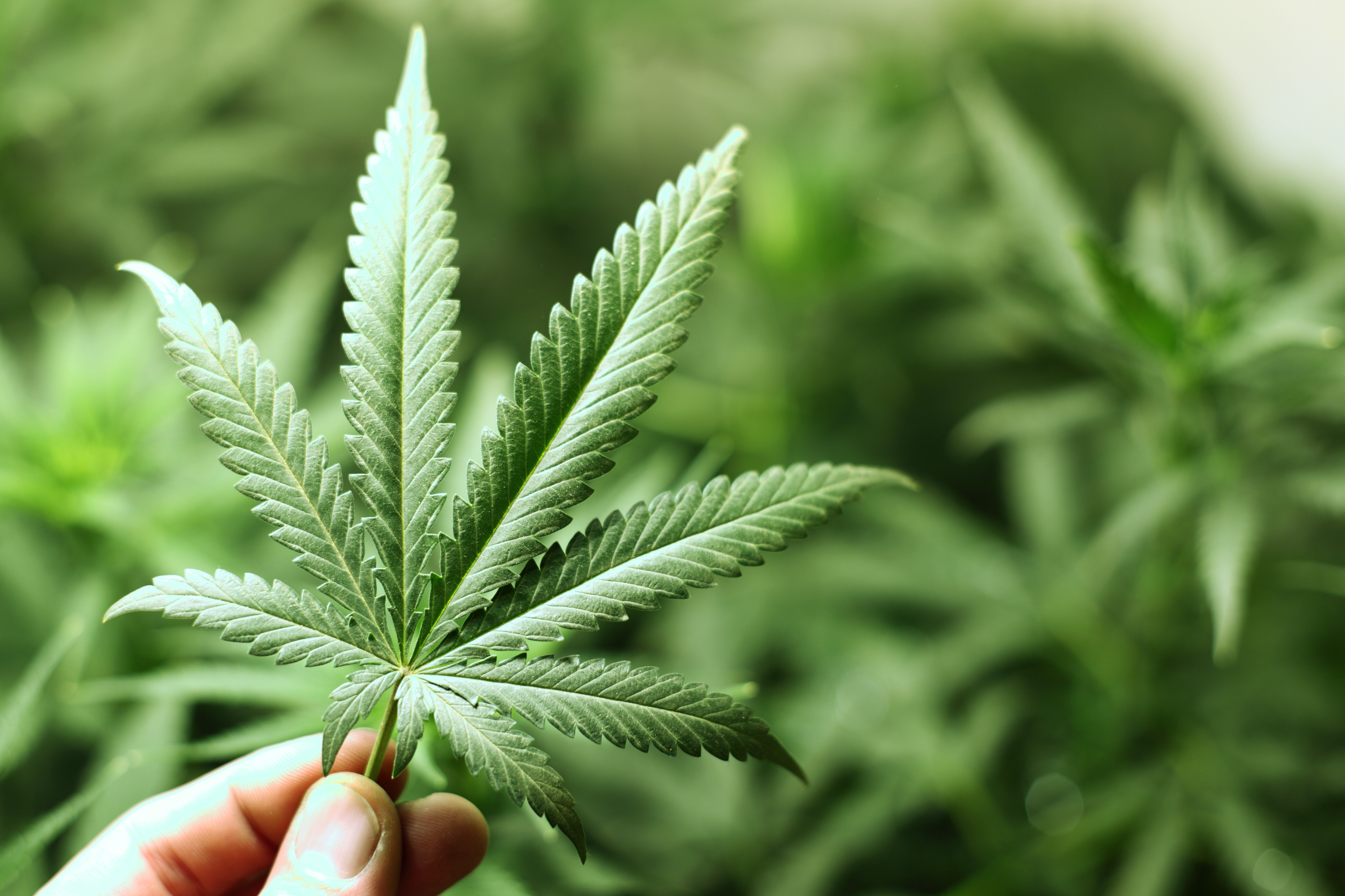Most of us are familiar with the broken record of the “legalization of pot” debate. However, the assumption that the majority of Americans know and recognize the science behind marijuana is something quite taken for granted. It is time to introduce average folks outside of scientists, medical professionals, and habitual pot smokers to the realities of marijuana. To understand the possible future of legalization of the marijuana plant, you must first understand the Cannabis sativa plant itself.
Particularly effective components of cannabis are cannabinoids, which are a group of terpenophenolic (unusual natural products of mixed biosynthetic origin) compounds and occur naturally in the nervous and immune systems. Cannabinoid receptors (molecules that bind CBD) have been found in brain cells and nerve cells in other parts of the body and immune system. A non-psychoactive cannabinoid of marijuana is Cannabidiol (or CBD), a non-toxic chemical found in the Cannabis plant.
At the California Pacific Medical Center, scientists have found a Cannabis compound that stops metastasis in aggressive cancers. Metastasis is the spread of a cancer from one organ or part to another non-adjacent organ or part. One of the scientists, Sean McAllister has immensely studied the effects of Cannabidiol. Another scientist, Pierre Desprez has spent decades studying Id-1, the gene that causes the spread of cancer. The two combined their knowledge and skills to discover that CBD could stop metastasis in many different kinds of aggressive cancers including brain, prostate, and breast, “potentially altering the fatality of the disease forever”. McAllister and Desprez placed both the Cannabidiol and Id-1 in a petri dish and saw that the CBD could “essentially turn off the Id-1”. The cells then ceased to spread and returned to normal cells. This unique collaboration is a prime example of how partnership and combination of different ideas is essential to the research of science. The Cannabidiol compound works for many kinds of cancers where high levels of Id-1 are present. In the California Pacific Medical Center experiment no toxicity was found.
The main active cannabinoid in the Cannabis sativa plant is delta-9 THC. THC (Tetrahydrocannabinol) relieves pain and lower inflammation, blocks cell growth, promotes antiviral activity, and prevents growth of blood vessels that supply tumors. Medicinal purposes of marijuana are seen in history that date back to at least 3,000 years ago. In the 19th Century, Western medicine adopted the plant to relieve pain, spasms, and convulsions among other ailments.
Recreational use of marijuana goes back almost just as far, and can help with sleep, anxiety, and to increase appetite in those who are unable to eat due to medical reasons. Another way to understand Cannabis is to look at its recreational users, much like the recreational users of the “drug” alcohol. Sabrina Tavernise of The New York Times found that 1/3 of Americans misuse alcohol. There are anywhere from 75,000 to 100,000 deaths annually related to alcohol, 25,000 for drinking and driving alone. Let’s look at the facts and numbers; 20 percent of deaths per year from diseases of the circulatory and respiratory system are attributed to alcohol use. The same alcohol-related abuse is responsible for 60 percent of all homicides in the United States. The number of marijuana deaths last year is an astonishing zero. Yes, zero. The National Institute on Alcohol Abuse and Alcoholism states more than 14 drinks a week is excessive for men, while more than 7 drinks a week is excessive for women. I’m curious to know how many drinks the average 21-25 year old consumes in a typical week. Alcohol is very much legal and regulated for mature adults over the age of 21 yet is the cause of illnesses such as hypertension, liver disease, and breast and esophageal cancers. The Cannabis sativa plant has been proven to repair damages of cancer and disease, yet remains illegal and prohibited.
I have heard much speculation of the legalization and regulation of weed. In the Netherlands, the sale of marijuana is allowed to responsible adults over the age of 18 and the use of weed by minors is five times less than what it is in America, according to the British Medical Journal. Regulating the sale of marijuana could potentially raise tens of millions of dollars each year that could fund real substance abuse treatments as well as eliminate a very large and growing prison population. Police prosecuted 858,408 people for marijuana violations in 2009, according to the Federal Bureau of Investigation’s annual Uniform Crime Report. Marijuana arrests now amount to more than one-half (approximately 52 percent) of all drug arrests reported in the United States. The Campaign for the Restoration and Regulation of Hemp stated that “the war on drugs is not about drugs at all, but about money and the continued centralization of economic and political control.”
If that is the case, then perhaps both side of this argument could meet in middle. There are several ways to decrease the crime associated with Cannabis and utilize the plant to stimulate economic growth for the United States. Legalized weed could be “sin” taxed; meaning profits could be used to boost revenue for individual states and the government. Sin taxes are used on alcohol and tobacco, and are levied on commodities that are “objects of widespread disapproval”. Paul Samuelson describes sin taxes as a way to gain revenue for states and the vice is made more expensive. According to the Center for Disease Control and Prevention, 1 in 5 deaths (about 443,000) occur per year in America from tobacco use, yet tobacco is still legal and grown nationwide. Larry Dove of Georgia has purposed the legalization of marijuana would allow farmers to grow the plant and attach a tax stamp on the crop like tobacco. He says it is a “win-win” for taxpayers because less money would be going to a bloated prison system for drug users, and the new marijuana tax would generate money coming into that state for other worthy projects.
Another positive way to legalize and regulate the Cannabis plant would be to use it to cultivate Industrial Hemp intended for agricultural and industrial purposes. Ron Paul introduced the Industrial Hemp Farming Act of 2007 that would allow states to legally grow hemp. Hemp is not the exact same thing as recreational weed however, and is grown for the seed and fiber content. Industrial Hemp is low in THC and high in CBD. The ratio of CBD to THC is greater than one. Hemp could be used to make paper, paints, clothing, plastics, and cosmetics right here in the United States. Growing hemp would provide millions of dollars a year, and since it is considered by many to be a “wonder fiber” could be used in the assembly of popular clothing that is currently produced in Canada. The genetic relationship of hemp and weed is the reason behind the illegalization of cultivation of hemp and causes economical loss to states. In Oregon, the Cannabis Tax Act suggest profits from the sale of Cannabis would help create and fund an agricultural committee to promote hemp fiber, protein, oil crops, and associated industries.
The Cannabis sativa plant has been used in scientific study and medical research, proven to be beneficial for the human body, is less harmful than alcohol, and could create a forever cash crop and jobs, bring in tax money and state revenue, and favor the betterment of America’s industrial and agricultural industries to create an economically improved United States.











